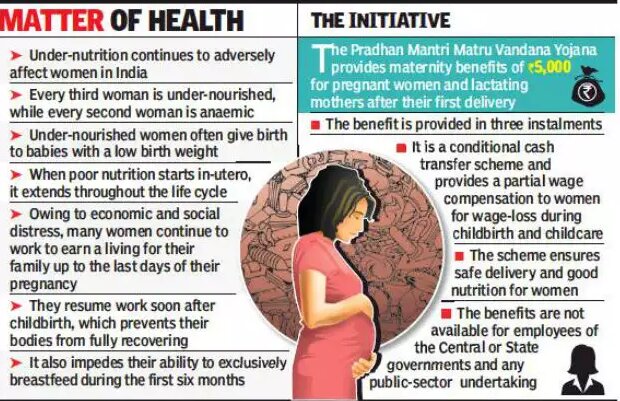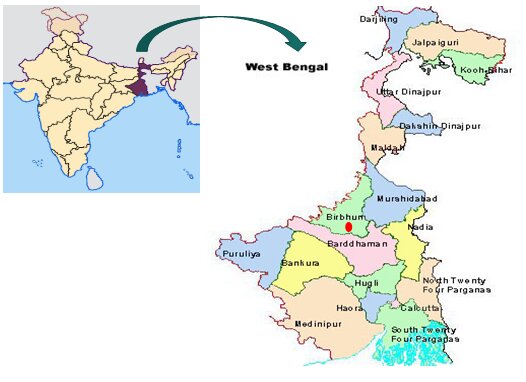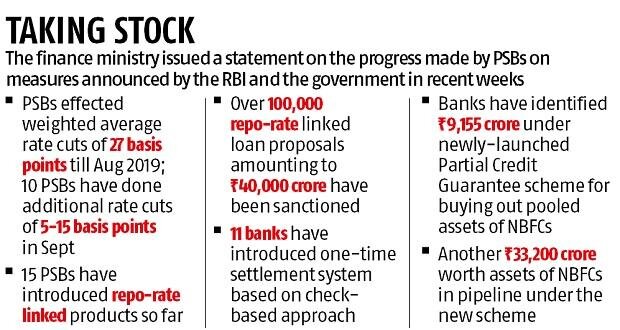International Relations
India and Belgium-Luxembourg Economic Union
Recently, the 16th Session of the Joint Economic Commission (JEC) between India and Belgium Luxembourg Economic Union (BLEU) was held in New Delhi.
- India and BLEU reiterated the importance of the Joint Economic Commission (JEC) towards the development of bilateral economic and trade relations through facilitating dialogue and enhancing cooperation on a wide range of issues of mutual interest.
- Joint Economic Commission between India and Belgium - Luxembourg Economic Union (India-BLEU) was established in 1997 and is the main vehicle for discussing economic and commercial issues.
- This biennial event is organized in the capital cities of the three countries alternatively.
Belgium Luxembourg Economic Union (BLEU)
- Belgium Luxembourg Economic Union (BLEU) was created by a treaty signed in 1921.
- Under the terms of the treaty, the economic frontier was lifted and the Belgian franc and Luxembourg franc were set at a fixed parity establishing a monetary union, which existed until the introduction of the euro.
- A new convention was signed in 2002, between the two nations.
- Although most of the aims of BLEU have largely been taken up by the Benelux Union (between Luxembourg, Belgium, and the Netherlands) and the European Union, it has remained more relevant in deciding exact measures than the other organizations.
- The Belgium–Luxembourg Economic Union is the world’s 13th largest export economy.
India-Belgium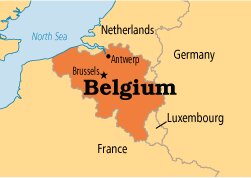
- India is Belgium’s second-largest export destination and fourth-largest trade partner outside the European Union with a significant contribution from the Indian diaspora.
- The leading exports from Belgium to India are in the sectors of gem and jewellery (rough diamonds), chemical and chemical products and machinery and mechanical products.
- The major exports from India to Belgium are in the sectors of gem and jewellry (finished products), base metals and articles and chemicals and chemical products.
India-Luxembourg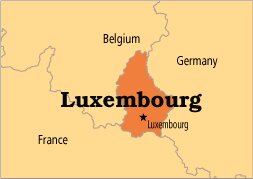
- Luxembourg is the 16th most important investor in India and among EU member states it ranks 4th among the combined FDR and FII investors in India.
- The sectors that attracted maximum investments from Luxembourg include trading, computer software & hardware, services sector, agricultural machinery, and chemicals.
- India and Luxembourg have had longstanding cooperation in the steel sector.
Governance
Pradhan Mantri Matru Vandana Yojana
Pradhan Mantri Matru Vandana Yojana (PMMVY) has achieved a significant milestone by crossing one crore beneficiaries.
- Also, the total amount disbursed to the beneficiaries under the scheme has crossed Rs. 4,000 crores.
Pradhan Mantri Matru Vandana Yojana
- Pradhan Mantri Matru Vandana Yojana (PMMVY) is a maternity benefit programme being implemented in all districts of the country with effect from 1st January, 2017.
- It is a centrally sponsored scheme being executed by the Ministry of Women and Child Development.
- Direct Benefit Transfer Scheme: Cash benefits are provided to pregnant women in their bank account directly to meet enhanced nutritional needs and partially compensate for wage loss.
- Target Beneficiaries:
- All Pregnant Women and Lactating Mothers (PW&LM), excluding those who are in regular employment with the Central Government or the State Governments or PSUs or those who are in receipt of similar benefits under any law for the time being in force.
- All eligible Pregnant Women and Lactating Mothers who have their pregnancy on or after 1st January 2017 for the first child in the family.
- Benefits under the Scheme:
- Beneficiaries receive a cash benefit of Rs. 5,000 in three installments on fulfilling the following conditions:
- Early registration of pregnancy
- Ante-natal check-up
- Registration of the birth of the child and completion of first cycle of vaccination for the first living child of the family.
- The eligible beneficiaries also receive cash incentive under Janani Suraksha Yojana (JSY). Thus, on an average, a woman gets Rs. 6,000.
- Beneficiaries receive a cash benefit of Rs. 5,000 in three installments on fulfilling the following conditions:
- Distinctive Feature: Implementation of the scheme is closely monitored by the central and state governments through the Pradhan Mantri Matru Vandana Yojana - Common Application Software (PMMVY-CAS).
- PMMVY-CAS is a web based software application that enables tracking the status of each beneficiary under the scheme, resulting in expedited, accountable and better grievance redressal.
- Present Status:
- Madhya Pradesh, Andhra Pradesh, Himachal Pradesh, Dadra & Nagar Haveli and Rajasthan are the top five States/UT in the country in implementation of PMMVY.
- Odisha and Telangana are yet to start implementation of the scheme.
Janani Suraksha Yojana
- The Janani Suraksha Yojana (JSY) is a 100% centrally sponsored scheme which is being implemented with the objective of reducing maternal and infant mortality by promoting institutional delivery among pregnant women.
- Basically, it is a safe motherhood intervention under the National Health Mission (NHM).
- Benefit:
- Under the JSY, eligible pregnant women are entitled for cash assistance irrespective of the age of mother and number of children, for giving birth in a government or accredited private health facility.
- The scheme also provides performance based incentives to women health volunteers known as Accredited Social Health Activist (ASHA) for promoting institutional delivery among pregnant women.
- Special Focus: The scheme focuses on the poor pregnant woman with special dispensation for states that have low institutional delivery rates, namely, the states of Uttar Pradesh, Uttarakhand, Bihar, Jharkhand, Madhya Pradesh, Chhattisgarh, Assam, Rajasthan, Odisha, and Jammu and Kashmir.
- The above states have been named the Low Performing States (LPS) under the scheme and the remaining States/UTs have been named the High Performing States (HPS).
Governance
National Educational Alliance for Technology (NEAT) Scheme
Recently, the Ministry of Human Resource Development (MHRD) has announced a new National Educational Alliance for Technology (NEAT) to use technology for better learning outcomes in Higher Education.
- The scheme aims to use Artificial Intelligence to make learning more personalized and customized as per the requirements of the learner.
- MHRD aims to recognize the development of technologies in Adaptive Learning and bring them under a common platform so that learners can access it easily.
- It proposes to create a National Alliance with such technology developing EdTech Companies through a Public-Private Partnership (PPP) model.
- MHRD would act as a facilitator to ensure that the Adaptive Learning Solutions are freely available to a large number of economically backward students.
- Under the scheme, a National NEAT platform would be created to provide one-stop access to Adaptive Learning Solutions.
- EdTech companies would be responsible for developing solutions and manage the registration of learners through the NEAT portal.
- NEAT is aimed at taking the concept of Massive Open Online Courses (MOOCS) platform a step ahead.
- All India Council for Technical Education (AICTE) would be the implementing agency for the NEAT programme.
- It would help to certify maximum students with highly marketable skills and would also improve the employability of students.
All India Council for Technical Education (AICTE)
- It was set up in November 1945 as a national-level apex advisory body.
- Its purpose was to conduct a survey on the facilities available for technical education and to promote development in the country in a coordinated and integrated manner.
- According to the National Policy of Education (1986), AICTE is vested with:
- Statutory authority for planning, formulation, and maintenance of norms & standards,
- Quality assurance through accreditation,
- Funding in priority areas, monitoring, and evaluation,
- Maintaining parity of certification & awards,
- The management of technical education in the country.
Indian History
Keeladi Findings
According to a report published by the Tamil Nadu Archaeology Department (TNAD), the cultural deposits unearthed during the excavations at site Keeladi located in the Sivaganga district could be dated to a period between the 6th century BC and the 1st century AD.
Key Findings
- The title of the report was ‘Keeladi-An Urban Settlement of Sangam Age on the Banks of River Vaigai.’
- Previously it was believed that the Keeladi artefacts belonged to the 3rd century BC.
- But the carbon dating test confirmed the date of the Tamil-Brahmi script is dated to the year 580 BC.
- The results suggest that the second urbanization (the first being the Indus Valley Civilization) of Vaigai plains happened in Tamil Nadu during the 6th century BC.
- The contemporary of which in the Gangetic plains was the Iron Age & the period of the rise of various Heterodox sects.
- Skeletal fragments of Cow/Ox & Buffalo, Sheep & Goat, Nilgai & Blackbuck, Wild boar, and Peacock suggest that the society in Keeladi had used animals predominantly for agricultural purposes.
- Pottery specimens from Keeladi confirmed that the water containers and cooking vessels were shaped out of locally available raw materials.
- The recovery of spindle whorls, pinpointed bone tip tools, hanging stones of the yarn, terracotta spheres, copper needle, and earthen vessels to hold liquid, outlines the various stages of weaving industry from spinning, yarning, looming, weaving and dyeing.
Sangam Age
- The word ‘Sangam’ is the Tamil form of the Sanskrit word Sangha which means a group of persons or an association.
- The Tamil Sangam was an academy of poets who flourished in three different periods and in different places under the patronage of the Pandyan kings.
- The Sangam literature which was largely consolidated from the third Sangam, throws information on conditions of life of people around the beginning of the Christian era.
- It deals with the secular matter relating to the public and social activities like government, war charity, trade, worship, agriculture, etc.
- Sangam literature consists of the earliest Tamil works (such as the Tolkappiyam), the ten poems (Pattupattu), the eight anthologies (Ettutogai) and the eighteen minor works (Padinenkilkanakku), and the three epics.
Tamil-Brahmi Script
- The Brahmi script was the earliest script that the Tamils used.
- In the late ancient and early medieval period they started evolving a new angular script, called the Grantha script, from which the modern Tamil is derived.
Vaigai River
- It is an east-flowing river.
- The Vaigai river basin is an important basin among the 12 basins lying between the Cauvery and Kanyakumari.
- This basin is bounded by the Cardamom Hills and the Palani Hills on the West and by the Palk Strait and Palk Bay on the East.
Important Facts For Prelims
World’s Second-Largest Coal Block
Deaucha Panchami coal block of Birbhum Coalfield Area is World’s Second Largest Coal Block situated in West Bengal.
- This coal mine is the largest coal mine or coal block in Asia, due to the number of coal reserves.
- It is the newest coal mine in West Bengal.
- The proposed mining project at Birbhum coalfield Area has been recently in the news due to expected environmental concerns and displacement of the people from the same area.
Important Facts For Prelims
Loan Mela
The Finance Ministry in a bid to give impetus to the slowing economy recently announced to organize the loan melas in the 400 districts of the country.
- The reason behind such an initiative was to increase the liquidity in the market.
- Banks despite having the liquidity were not following a standard monetary policy transmission measure.
- This move will now compel the banks to give funds to the Non-Banking Financial Company (NBFCs) (which are the principal channel for providing loans to small businesses in the country) and from there it will pass on to the end customers, through public meetings or popularly called the ‘Shamiana meetings’.
- The banks and the NBFCs will partner with each other to disburse the loans to the customers.
- Public Sector Banks will focus on giving loans to the 'RAM' category, i.e., Retail customers including homebuyers, Agriculture and farmers, and Micro, small and medium enterprises (MSMEs).
- To resolve the MSME stress and recast their debt, the banks will no longer classify the MSME-stressed loan as a Non-Performing Assets (NPAs) until March 31, 2020.

